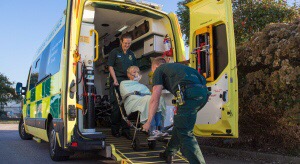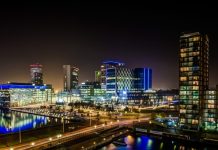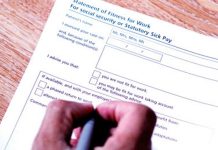Monday 8 February saw a surge in 999 calls to the North West Ambulance Service, with the Trust recording a 22 per cent rise in calls and a 24 per cent rise in life-threatening ‘red’ calls, compared to the same day last year.
The unexpected surge in calls presented the North West Ambulance Trust with a huge challenge and did mean that some patients had to either wait longer than they should have done for a response, or those with minor conditions were told that an ambulance could not be sent.
Assistant Director of Operations, Ged Blezard comments: “We are better resourced than ever before. Last year we increased our frontline staff by 3.5 per cent and our call handling staff by 6.1 per cent. Even so, the rise in 999 calls is a challenge for us and when we have unexpectedly busy days, it is patients who suffer.
“I have worked in the ambulance service for 30 years, starting out on the frontline myself and I cannot understand why people call us for minor ailments which can be easily dealt with by either visiting a pharmacy, a GP or attending a walk in or minor injuries unit. The ambulance service is not a taxi or mobile first aid service. We are here for life threatening or potentially life-threatening emergencies and those who call us for minor complaints will be advised to use the right service.
NWAS answered 3,827 ‘999’ calls , compared with 3,115 on the same Monday last year and while most people do genuinely call for an emergency, there are still those who call for minor ailments that do not warrant an ambulance response.
One caller in Greater Manchester was worried because they had swallowed a piece of chewing gum while another caller had cut their toenail and was worried that their toe was hurting.
All of these callers were advised to seek advice elsewhere. Each 999 call to our control centres costs the NHS £8.47 and more importantly, can tie up a line needed by someone who urgently needs help. A fully crewed ambulance response and subsequent journey to hospital costs approximately £240.
Ged adds: “We are here to come to the aid of people who are in urgent need but are consistently called for ailments such as these which we can’t deal with. Because of the sheer volume of calls, patients who really need us are waiting longer than they should do and our crews find this deeply frustrating.
“One of our greatest achievements is the increase in our ‘hear and treat’ and ‘see and treat’ responses. Calls triaged as not life-threatening or even potentially life-threatening can be transferred to a Specialist Paramedic who can ask further questions to ascertain the level of response required or provide advice over the telephone (hear and treat). They may then request that an ambulance is despatched for treatment safely given within the home (see and treat). This prevents unnecessary journeys to busy hospitals. The number of hear and treat episodes has increased by 11 per cent with see and treats up by 20 per cent.
“Our message to the public is that if your call is not urgent, it would make more sense to seek advice elsewhere before calling.”







